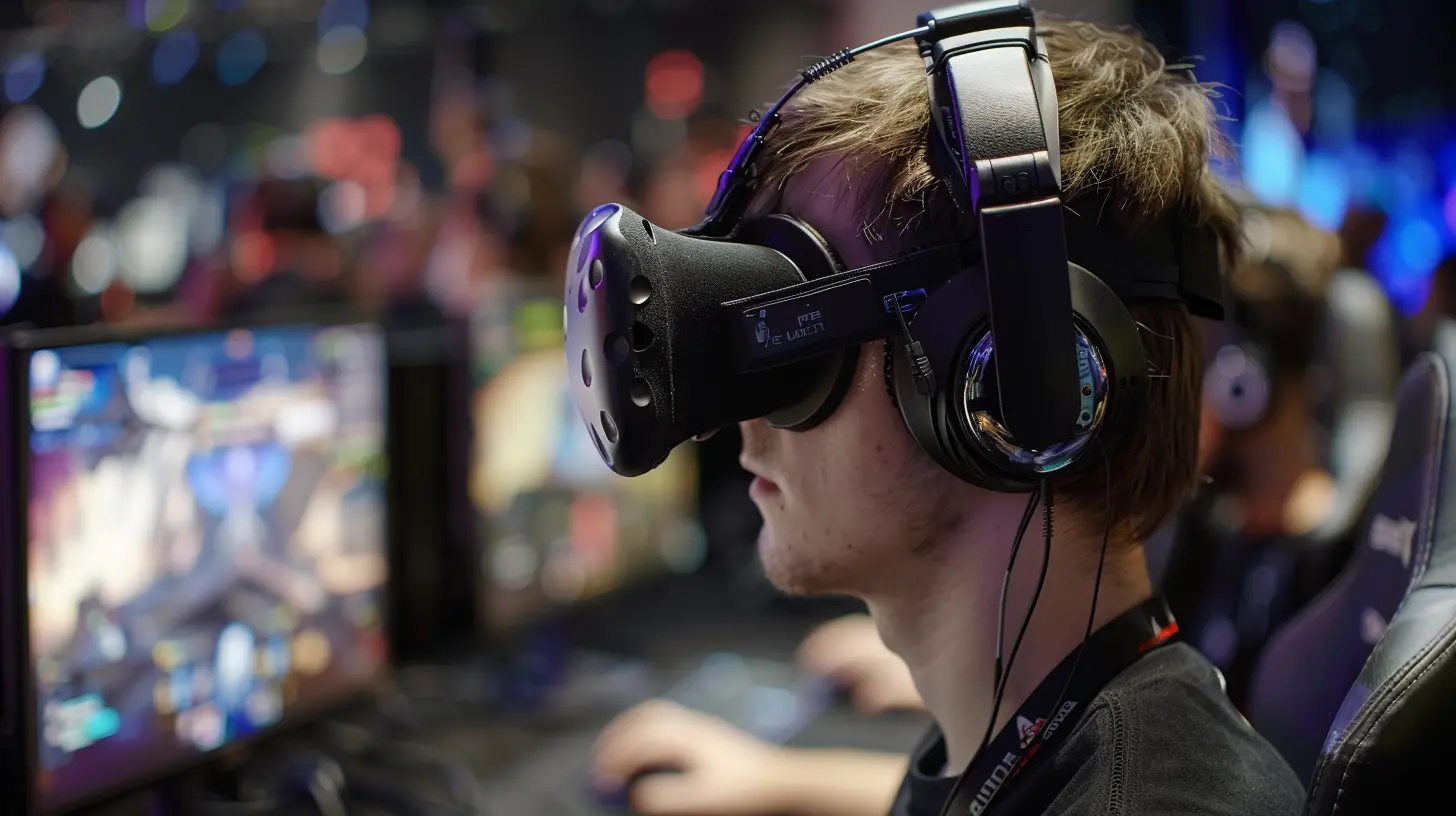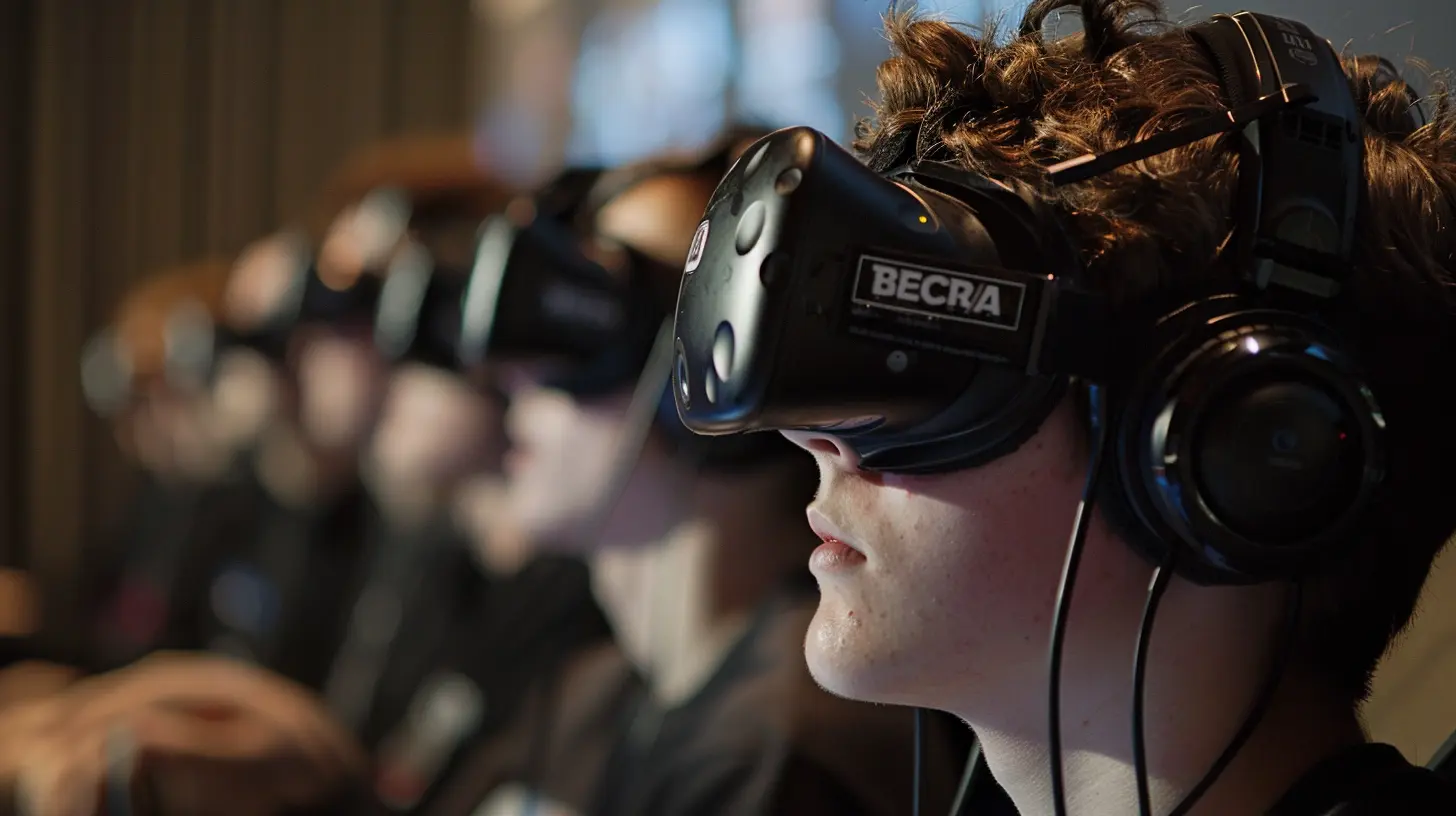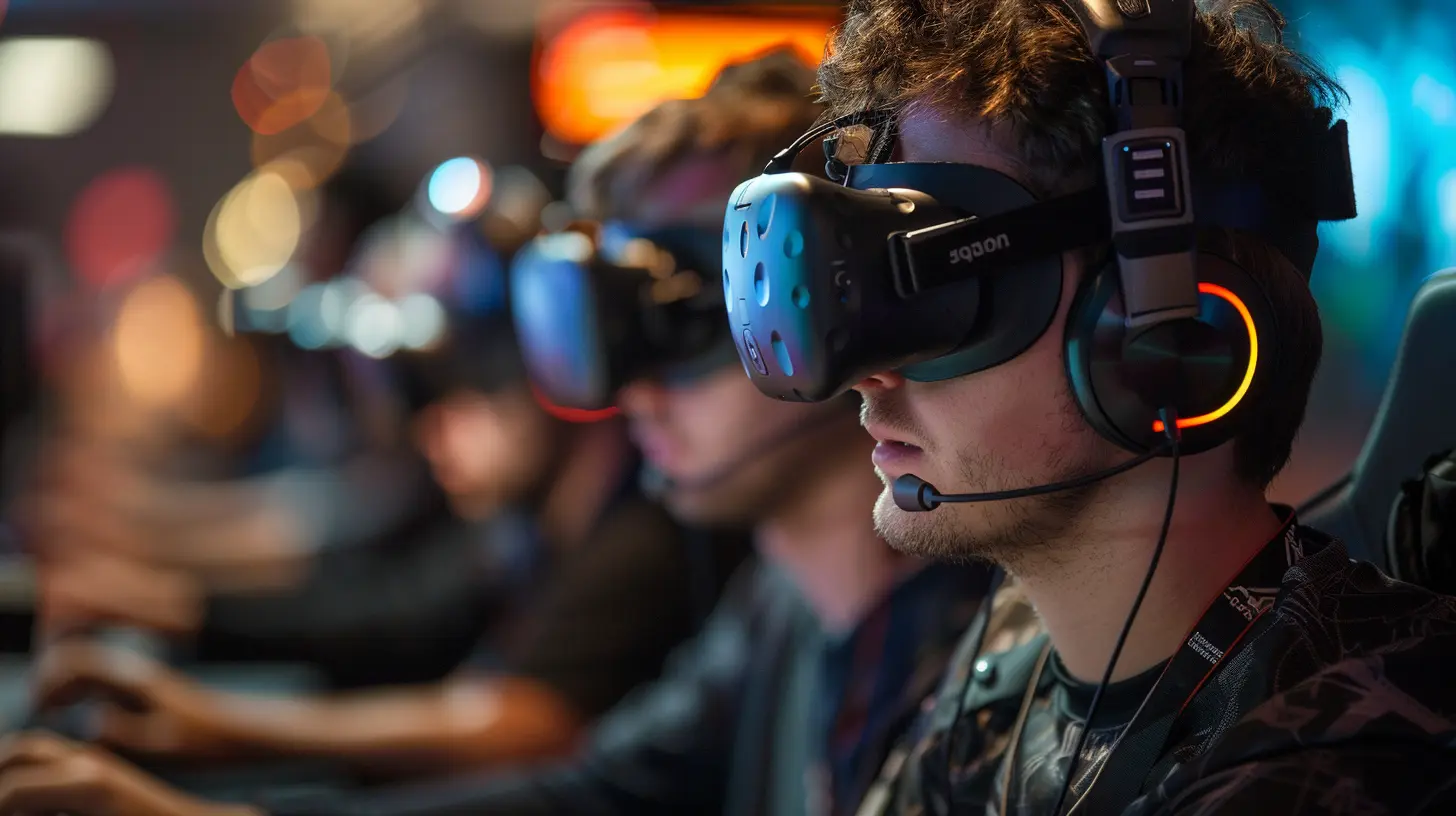How Virtual Reality Could Revolutionize the Future of E-Sports
7 July 2025
Let’s be honest—if you told someone back in the early 2000s that video games would one day involve people wearing headsets, flailing around their living rooms, and competing for millions of dollars in front of a global audience, they’d look at you like you just stepped out of The Matrix.
But here we are.
And now it’s time to talk about the next game-changer: Virtual Reality (VR).
Virtual reality isn't just about slashing boxes with lightsabers or painting in 3D space. It's carving out a whole new arena in the world of competitive gaming. Yep, we’re talking about how virtual reality could revolutionize the future of e-sports—and why you should absolutely care, even if you’ve never picked up a VR headset in your life.
So, strap in (or strap on that VR rig) because we’re diving into the pixelated future of sweat-inducing, adrenaline-pumping, completely immersive e-sports.
What’s the Buzz Around VR in E-Sports?
Here’s a little thought experiment: Imagine an e-sports match where players actually move—like, physically move. Not just twitch-finger reactions or keyboard clacking, but full-body ducking, diving, sprinting, and swinging.Sounds wild, right?
That’s the magic VR brings. With the rise of consumer VR platforms like Oculus Quest 2, Valve Index, and PlayStation VR, games are no longer limited to flat screens. Now, players can step into the game. And this shift—from observer to participant—is what’s poised to shake up the entire e-sports landscape.
Why VR Feels Like a Total Game-Changer for Gamers
Not every day something comes along that completely redefines how we experience games. VR? It's like someone handed traditional gaming a triple-shot of espresso.Here’s the juicy part: VR pulls us out of the “couch potato gamer” mold.
With VR-based e-sports:
- You're no longer just controlling an avatar—you are the avatar.
- Reactions are based on body movements, not just thumb dexterity.
- Spectators get to see an entirely new dimension of gameplay.
Suddenly, gaming becomes more physical, more immersive, and, let’s be real, way more fun to watch.
The Current State of VR in Competitive Gaming
We’re not talking about theory here—VR e-sports already exist! It’s a smaller niche (for now), but it’s growing faster than a speed-runner on caffeine.Here are some VR titles making waves:
- Echo Arena – A zero-gravity disc-throwing game that feels like a full-on sport from the year 3000.
- Onward – Tactical military action that demands coordination, communication, and real-world skills like aiming and movement.
- Beat Saber – Rhythm gaming meets Jedi training. It’s already got a competitive scene with international players.
The VR Master League (yep, that’s a thing) is showing the world that these games aren’t just novelties—they’re legitimate e-sports with skill ceilings higher than your K/D ratio in Warzone.
It’s Not Just About Playing—Spectators Are in for a Treat
Let’s face it, watching traditional e-sports can feel like watching someone else use Excel—unless you're deep into the game.VR adds a whole new layer of excitement.
Imagine watching an e-sports game where you can:
- Switch to the player’s POV and see exactly what they see.
- Roam around the virtual arena in free cam like you're a ghostly commentator.
- Feel in the action rather than just observing from the sidelines.
VR doesn’t just revolutionize gameplay—it reinvents how we watch e-sports. This alone makes it a content goldmine for streamers, broadcasters, and even metaverse-style integration.
The Physical Side: E-Sports Athletes, Meet Sweat
Let’s talk about fitness for a sec—yes, in a gaming article.In traditional e-sports, players sit for long stretches, often tied to sedentary lifestyles. VR flips that script faster than you can say “respawn.”
In VR e-sports:
- Players physically engage with the game—dodging bullets, swinging swords, or sprinting in place.
- Training involves real-world stamina, positioning, and endurance.
- Injuries can actually be sports injuries (yep, tennis elbow is now gamer elbow).
This evolution might shift public perception of gaming from “lazy pastime” to legitimate athletic competition. VR could finally land e-sports in the same social ballpark as traditional sports—and that’s big.
The Tech is Catching Up—And It's Getting Wild
Remember when early VR was mostly duct-taped phones and cardboard boxes? Things have come a long way.Here’s what we’re looking at now:
- Wireless VR – No more tripping over cables mid-match.
- Haptic feedback suits and gloves – Feel punches, pulls, and even resistance.
- Eye tracking and full-body motion detection – More accurate gameplay and interactions.
As tech advances, the realism gets better—and so does the competitiveness. Throw in AI spectators, voice analysis, and 5G cloud streaming? Boom. Next-level e-sports is knocking on the door.
Challenges VR Must Overcome (Let’s Be Real)
Alright, let’s not drink all the VR Kool-Aid without a few disclaimers.VR e-sports isn't all virtual roses and digital glory just yet. Here are some real-world hurdles:
1. Costs – VR setups aren’t cheap. Entry-level systems can run $300–$1,000, and that’s before clever accessories.
2. Physical Space Requirements – Not everyone has a living room the size of a small dojo.
3. Motion Sickness – Some players still get woozy navigating the virtual realms.
4. Standardization – Not all games are built for fair competition, and measuring skill across a VR platform is still a work in progress.
Still, as with all tech revolutions, early days are bumpy. The internet wasn’t exactly smooth sailing in the ‘90s either.
The Potential for Brand New E-Sports Genres
Now for the fun part: once VR becomes the norm, we’re not just going to see current games “ported” into virtual reality. We’ll see entirely new genres born from the virtual womb.Imagine:
- A real-time wizard duel where you make actual gestures to cast spells.
- Parkour races across gravity-defying landscapes.
- Interactive detective tournaments where players solve VR mysteries competitively.
It’s not just about first-person shooters anymore. VR opens the door to creative, genre-defying experiences that simply can’t exist in traditional formats. The possibilities are only limited by imagination—and maybe bandwidth.
Cross-Platform Competition and the Rise of the “Mixed Reality Athlete”
This part is juicy. As VR integrates further with AR (Augmented Reality) and MR (Mixed Reality), we might start seeing cross-platform e-sports competitions.Players could compete in:
- Fully VR setups
- Augmented environments (think Pokémon GO turned pro)
- Hybrid games blending real-world movement with digital overlays
We could be seeing the birth of a new kind of athlete—one who trains in VR, competes globally, and blends physical prowess with mental agility. Like an e-sports ninja-monk hybrid. Sound cool? Because it is.
Could We See VR in the Olympics One Day?
Hot take incoming: VR e-sports might eventually land a spot in the Olympics.Far-fetched? Maybe.
But hear me out:
- The Olympic Committee has already dabbled in e-sports showcases.
- VR adds the physicality that traditional e-sports lack.
- Global accessibility through VR could make it more inclusive.
It’s not impossible. And when that day comes, we’ll all be watching history—through VR headsets, of course.
What Needs to Happen Next? (Spoiler: A Lot)
For VR e-sports to really explode, here’s what needs to happen:- Affordable Hardware – So more players can enter the virtual arena.
- More Game Developers Jumping In – We need better competitive titles tailor-made for VR.
- Tournaments and Leagues – Building the infrastructure of VR e-sports.
- Better Spectator Tools – For those of us who love watching more than playing.
It won’t happen overnight, but the runway’s been cleared. All systems go.
So... Are You Ready to Jump In?
If you're a gamer, streamer, developer, or just a curious tech enthusiast, VR e-sports is something you need to keep an eye on.We’re standing at the edge of a new digital frontier. It’s not just about better graphics or faster processors. It’s about stepping into the game, becoming part of the action, and redefining what it means to compete.
Whether you're dodging plasma shots, slashing neon cubes, or just trying to not fall over in your living room, VR is the future of e-sports—and it’s closer than you think.
Put down the controller and grab the headset.
Game on.
all images in this post were generated using AI tools
Category:
E SportsAuthor:

Madeleine McCaffrey
Discussion
rate this article
2 comments
Lila Curry
While the potential of virtual reality in e-sports is exciting, it raises concerns about accessibility and the steep learning curve for newcomers. Balancing immersive experiences with inclusivity will be crucial for VR’s successful integration into competitive gaming and its broader audience appeal.
October 10, 2025 at 2:43 PM

Madeleine McCaffrey
You make an excellent point! Ensuring accessibility and a welcoming entry point for newcomers will be key to leveraging VR's potential in e-sports while fostering a diverse community.
Cypher Good
Exciting times ahead for e-sports! 🌟 Virtual reality has the potential to transform how we play and experience games, bringing players and fans closer than ever. Get ready for thrilling tournaments and unforgettable moments! The future looks bright—let’s gear up and dive in! 🎮✨
July 11, 2025 at 4:14 PM

Madeleine McCaffrey
Absolutely! Virtual reality is set to elevate e-sports by creating immersive experiences that enhance gameplay and fan engagement. Exciting times indeed! 🎮✨


